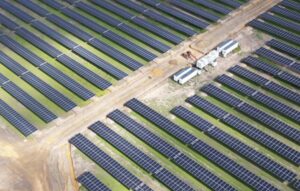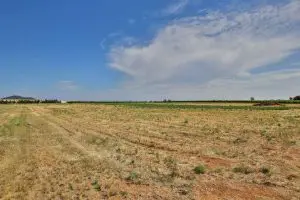The brief bonanza in revenue from frequency control and ancillary services (FCAS) on Australia’s main grid dried up in the second quarter, leading to a big reduction in revenue for the country’s fleet of big batteries and pumped hydro storage.
The five big battery storage installations on Australia’s main grid – Hornsdale, Lake Bonney (pictured above) and Dalrymple North in South Australia – and Gannawarra and Ballarat in Victoria – pulled in total revenue of just $7.5 million in the latest quarter, according to the latest Quarterly Energy Dynamics Report from the Australian Energy Market Operator.
That’s a sharp contraction from the $64 million earned by the big batteries in the previous quarter when some were required to play a critical role in managing the grid after South Australia was effectively “islanded” for more than two weeks after a storm tore down the main transmission link from Victoria.
The big batteries were handsomely rewarded for that effort but in the June quarter FCAS revenues slumped sharply – even despite the sharp increase in FCAS requirements imposed by AEMO to help manage the grid.
That speaks to increased competition in the market, and what many observers had long suggested – that the big batteries will quickly eat each other’s lunch in the small FCAS market, and which is why the industry is so keen in pushing through new market rules that can add value to the range of services that they can offer.
According to AEMO, FCAS provided 88 per cent of “spot market” revenue for big batteries in the last quarter, with the rest coming from energy arbitrage (buying low and selling high), but even that was limited by the lack of volatility in the latest quarter, when prices were low for much of the three months.
This reduced voltality also ate into the earnings of the country’s limited fleet of pumped hydro storage installations, which according to AEMO earned net revenues of $3.6 million from the spot market in the second quarter.
That was largely due to the absence of spot price volatility in New South Wales and Queensland, although pumping costs were lower than they had previously been.
AEMO noted that overall FCAS costs – including those delivered by the traditional providers in the fossil fuel fleet – fell from their record highs (see below), despite the sharp increase in FCAS requirements (see table above).
- It said that reflected the absence of any dramatic power system separation events, lower overall energy prices, and a reduction in the price of offers from FCAS providers. Once again, a testimony to the impact of price competition that was once dominated, controlled and gamed by the gas cartel, before the Tesla big battery at Hornsdale came along and tipped over the apple cart.












